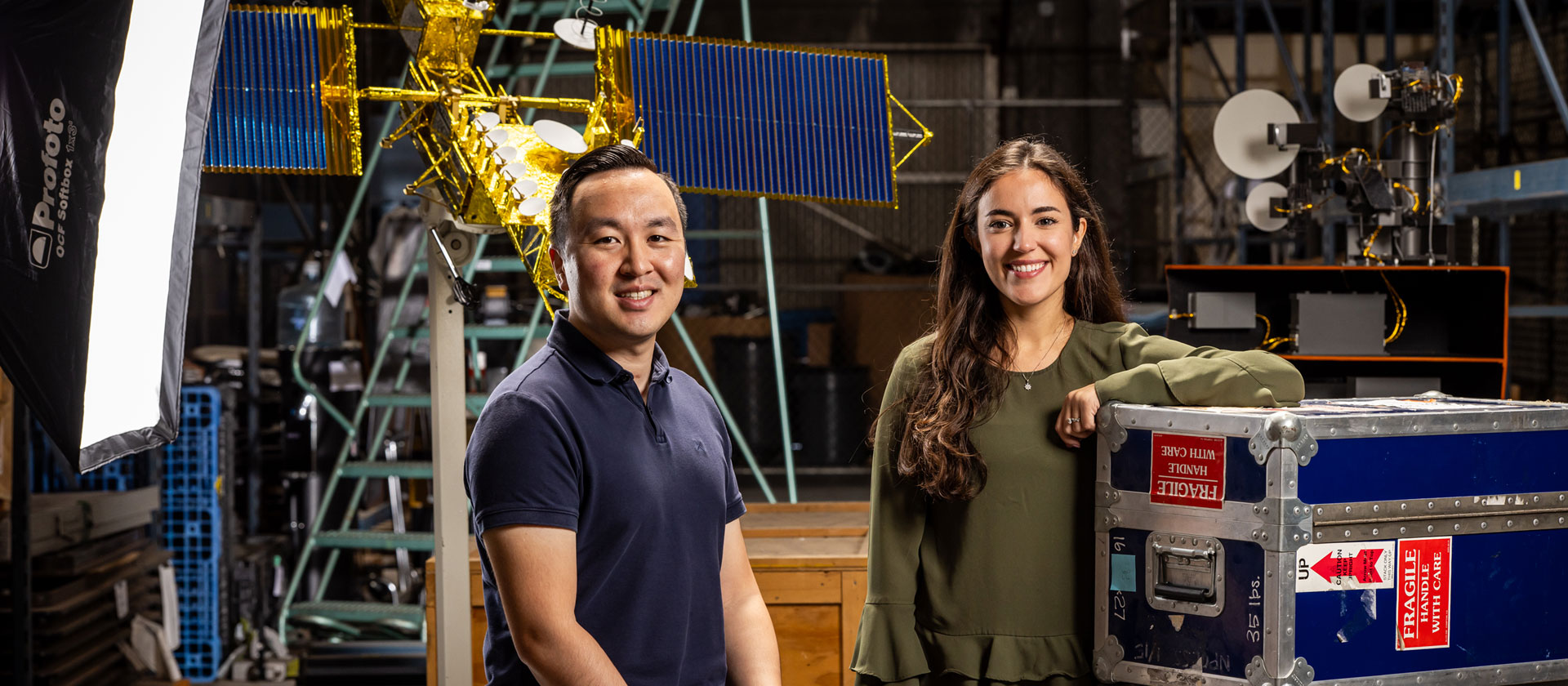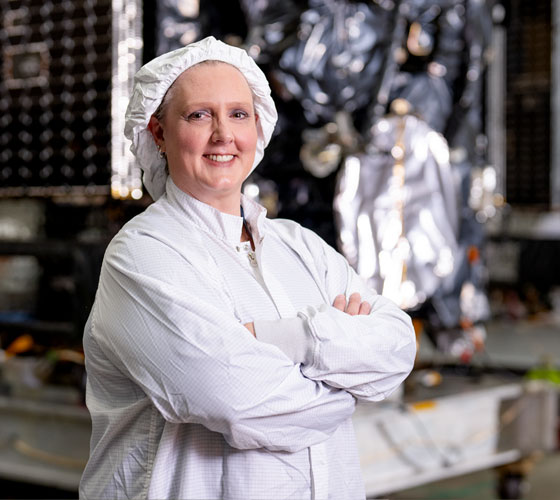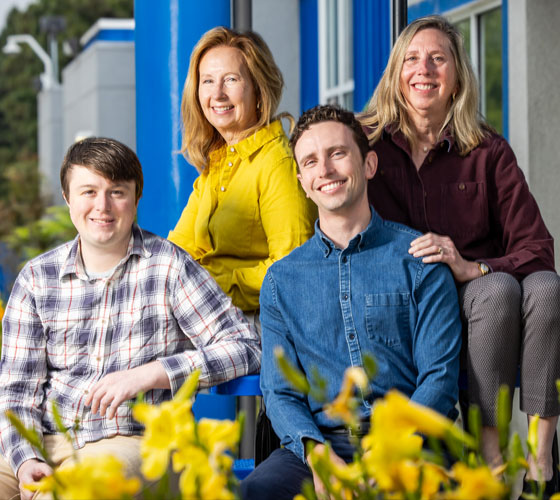Director Diane Legler ends her welcome speech to interns and college hires on her military satellite communications team with a bit of humor.
Sustaining and Advancing Military Satellite Communications
Early career engineers sustain COOLR program while bringing in fresh perspectives

By Rachel Ellis
In an era when digital transformation is constant, Northrop Grumman engineers are advancing military satellite communications (MILSATCOM) by sustaining and modernizing critical space assets.
At the company’s Redondo Beach, California, campus, the Combined Orbital Operations, Logistics, and Resiliency (COOLR) program plays a vital role in ensuring two long-standing MILSATCOM constellations continue to provide secure, uninterrupted communications for U.S. military forces worldwide.
These systems — Milstar, launched between 1993 and 2003, and Advanced Extremely High Frequency (AEHF), which had its final launch in 2020 — each feature Northrop Grumman-built payloads and represented generational leaps forward in satellite communications.
Today, engineers on the COOLR program ensure both systems continue to perform at the highest level while enhancing the payloads’ on-orbit digital processing to extend their lifespan and capabilities.
Sustaining and Growing
For early-career engineers like John Michael Machacon, who joined Northrop Grumman in 2020, working on COOLR has provided a unique opportunity to learn from experienced colleagues while applying modern engineering techniques.
“Even if it’s old school, this stuff is still futuristic to me,” John said. "These are approaches I didn’t have the opportunity to learn about in college because they’re older technology.”
John and his colleagues bring fresh perspectives to the program, analyzing system performance and developing new solutions to sustain and improve satellite operations.
“Since I am joining COOLR in its sustainment phase, I am able to process the data with fresh eyes and therefore might look at it differently than if I was with the program since the beginning,” John said.
There’s immense value in working on a legacy, decades-old program, John said. He appreciates the uniqueness of the experience as an early career engineer in space.
“It’s a misconception that sustainment is slow or not as exciting as beginning-of-life programs,” John said. “The veteran knowledge around me — and my ability to ask lots of questions — is profoundly helpful to my personal and professional growth.”
For Director Diane Legler, she enjoys witnessing each engineers’ innate desire to explore the past, present and future of military satellite communications as they sustain the COOLR program. Diane said it is rewarding to see the team’s motivated disposition at work every day.
“Our engineers have approached the job from day one with a growth forward mindset,” Diane said. “As a director, it’s important for me to provide an environment where their leadership skills are not only recognized and celebrated but career advancement is encouraged.”
Preparing for the Future
Diane Kim, an associate software engineer, also supports the COOLR program, specifically AEHF. Diane began her career as an intern at Northrop Grumman and joined the COOLR program full-time in 2022.
“While I work on the software side, there are many teams I am constantly interacting with who are focused on different areas of COOLR,” Diane said. “It’s rewarding to be interconnected with engineers across the company who are dedicated to the overall success of the mission.”
Ryan Li, a software engineer who also works on COOLR, said he’s enjoyed the opportunity to learn more about a satellite already in orbit — a notable part of the satellite's life cycle.
“In some of the newer programs, when there aren’t live satellites in the air, there is more exposure to the bid and demo phases,” Ryan said.
The early career COOLR engineers said they are proud to support and sustain a program that is integral to no-fail, assured and reliable MILSATCOM, both now and in the future. Looking to the next chapter of protected military communications, the team knows their work — and the legacy of AEHF and Milstar — lays the foundation.
“I believe the rigor and robustness in which these earlier satellites were built lays a solid foundation for the future of MILSATCOM,” Machacon said. “Based on how well our satellites are running to this day, the future of satellite communications is in good hands.”
Life at Northrop Grumman
Your work at Northrop Grumman makes a difference. Whether you want to design next-generation aircraft, harness digital technologies or build spacecraft that will return humanity to the moon, you’ll contribute to technology that’s transforming the world. Check out our career opportunities to see how you can help define possible.


